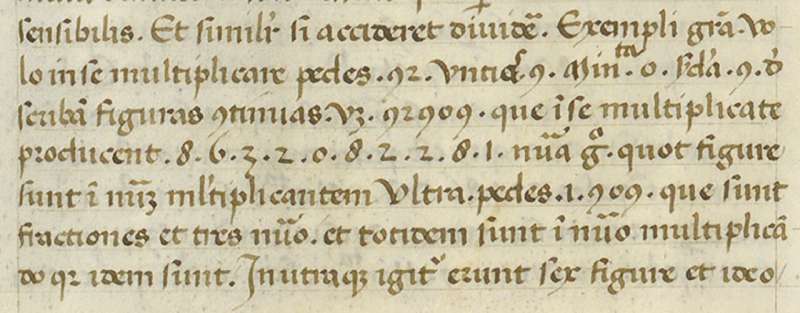February 20, 2024 report
This article has been reviewed according to Science X's editorial process and policies. Editors have highlighted the following attributes while ensuring the content's credibility:
fact-checked
trusted source
proofread
Use of decimal point is 1.5 centuries older than historians thought

A mathematical historian at Trinity Wester University in Canada, has found use of a decimal point by a Venetian merchant 150 years before its first known use by German mathematician Christopher Clavius. In his paper published in the journal Historia Mathematica, Glen Van Brummelen describes how he found the evidence of decimal use in a volume called "Tabulae," and its significance to the history of mathematics.
The invention of the decimal point led to the development of the decimal system, and that in turn made it easier for people working in multiple fields to calculate non-whole numbers (fractions) as easily as whole numbers. Prior to this new discovery, the earliest known use of the decimal point was by Christopher Clavius as he was creating astronomical tables—the resulting work was published in 1593.
The new discovery was made in a part of a manuscript written by Giovanni Bianchini in the 1440s—Van Brummelen was discussing a section of trigonometric tables with a colleague when he noticed some of the numbers included a dot in the middle. One example was 10.4, which Bianchini then multiplied by 8 in the same way as is done with modern mathematics. The finding shows that a decimal point to represent non-whole numbers occurred approximately 150 years earlier than previously thought by math historians.
Giovanni Bianchini worked as a merchant in Venice for many years before being appointed to an administrative role with a major estate owned by the powerful d'Este family. In this role, he also managed assets and investments, giving him a strong background in mathematics. He also published astronomy texts, demonstrating his ability to plot planetary motion and to predict when an eclipse would occur.
The finding suggests that Bianchini played a more important role in the development of math fundamentals than previously known. Van Brummelen notes that, as a merchant, Bianchini would have traveled extensively, including to places in the Islamic world, where math concepts were being developed, possibly influencing his use of non-whole numbers and ways to represent them more easily.
More information: Glen Van Brummelen, Decimal fractional numeration and the decimal point in 15th-century Italy, Historia Mathematica (2024). DOI: 10.1016/j.hm.2024.01.001
© 2024 Science X Network





















